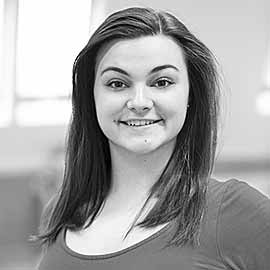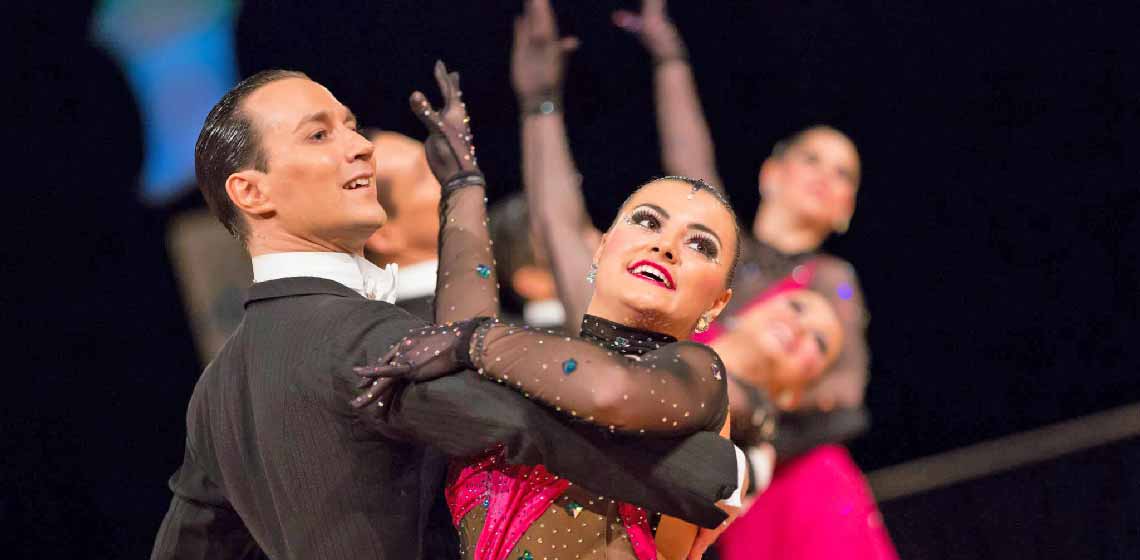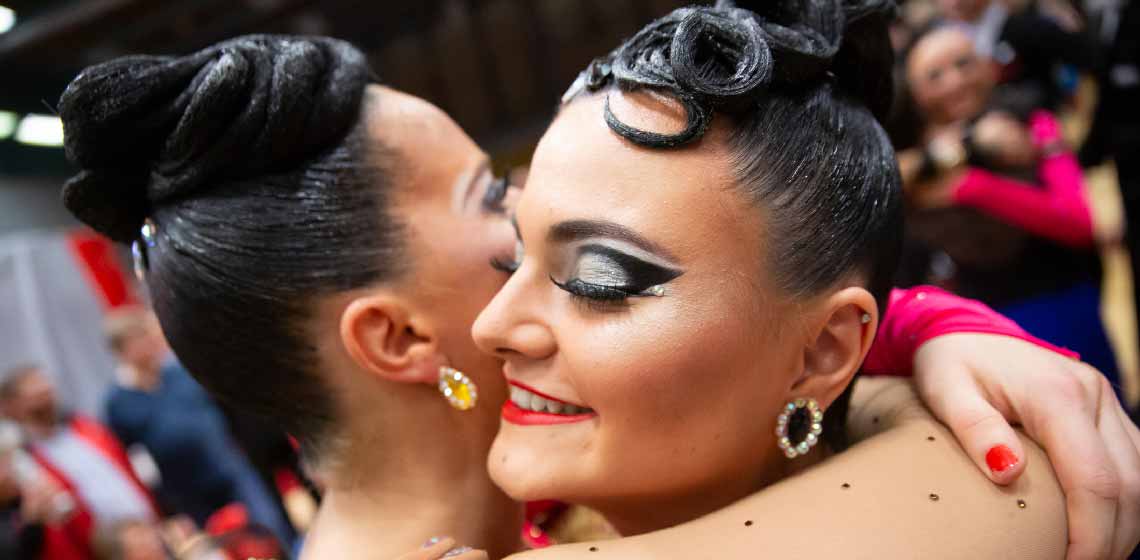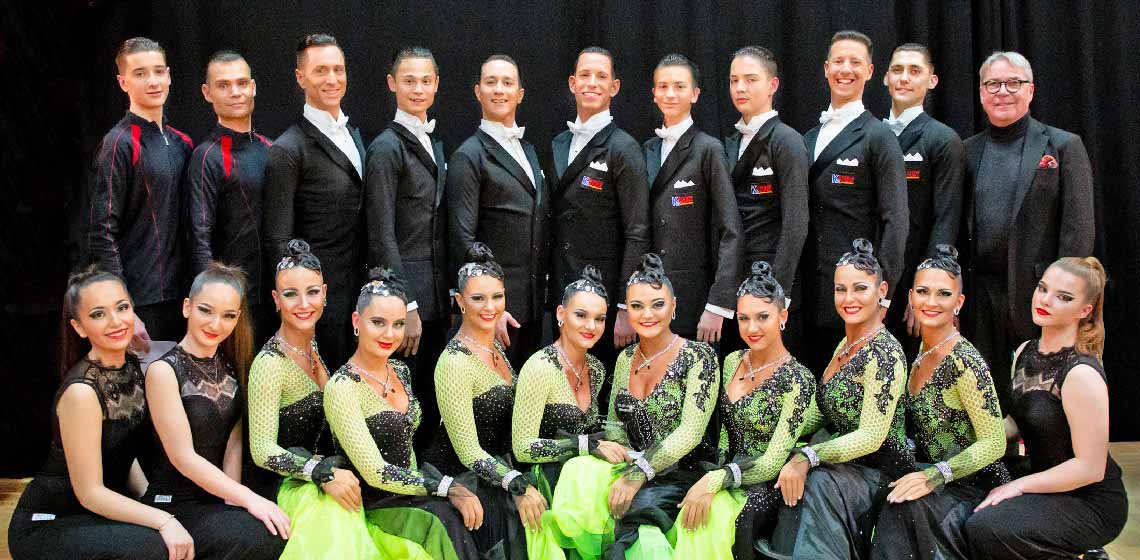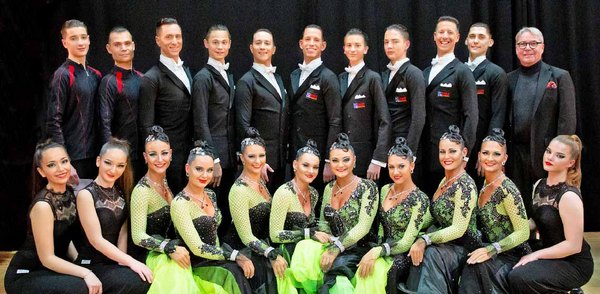It is by now a good tradition: every year’s BMA Info introduces a member of the BMA team who has an unusual hobby. For this issue, we have spoken to Caroline Ulsamer, who joined Human Resources at our Braunschweig site as a working student in April 2019. Caroline’s great passion is dancing.
Two kisses left and right
Caroline Ulsamer is one of Germany’s best formation dancers
Braunschweiger TSC · Final | 2019 World Formation STD Moscow
Ms Ulsamer, you are a formation dancer in the A standard formation for the Braunschweiger Tanzsport Club (BTSC). Your team’s latest achievements have been placing second in the German championship and coming fourth at the world championships in Moscow. What’s your state of mind immediately after you finish a performance, when the music is over?
Pure joy! Immense happiness – and relief, that I’ve made it. After each performance I ask myself: Did I do well? How is my coach reacting? In that instant, my body is full of energy and it’s just fabulous to see the whole audience.
Can you remember your very first dance lesson?
Yes, that was at dance school, with a class mate. I also played volleyball at the time, and I sang in a choir. It was quite difficult to do both, sports and singing. And then dancing as well…
When did you start with formation dancing?
I’ll never forget watching A formation dancing – they are the top dancers – in the German league: it was in the huge Volkswagen event hall and I was 15 years old. At the time, I said to my mum: “I want to be able to dance like that!” Just a few weeks later, I took part in a dance casting at the BTSC, without much preparation. I had a start number stuck to my back, and off I went.
How did it go?
After the audition, I got really positive feedback and a lot of praise. Along the lines of: “That was very impressive!” And not much later, I was in the middle of training for the B formation. Two years later, my dream became reality: I was on the dance floor for the last major competition of the season.
How many competitions are there in a year?
Now I dance in the A formation in the first German league, and our season runs from January to March. There are five competitions during that period. On the day of a competition, our formation has to present its choreography twice. Our performance is rated by a panel of seven judges, or even twelve in major championships.
The ballroom dresses are absolute eye-catchers. Do you have to buy them yourselves?
No, our club provides the dresses and suits. We wear each dress for as long as we do a specific choreography, that’s normally three years. But all dancers have to pay for their own shoes.
In competitions, all women have the same hair colour and style. Do you have a make-up artist for that?
No, we do it ourselves. To make sure we all look the same, we do each other’s hair, usually the night before a dance competition. We finalise it the next morning, before the competition starts. On the morning of the German championship, we got up at 4 a.m. to do our hair. We spray black hairspray on our hair, clip a hair piece on the plait, and finish off with rhinestone hair accessories. It can take four to five hours for all women to have their hair styled, put on make-up and stick on lashes.
Do you have backups, as you do in football?
A team consists of more dancers than the eight regular couples. It would be lost without dancers that can step in in unexpected situations. That’s why there is a ninth couple next to the dance floor. The coach may decide to change the formation, because of performance-related or health problems.
To the audience, it looks as though you float across the dance floor, your movements are so light. How often do you have to train?
We train between five and seven days a week, that’s around 20 training hours overall.
Do you get paid for your sport?
No, I don’t earn any money as an amateur formation dancer. I would only be able to earn some money with dancing if I became a professional dancer as part of a couple.
Many sports clubs say they have problems recruiting young talents. Is that the same in dancesport?
Not as a rule, but it would be nice if more men were interested in this beautiful sport.
You’ve now finished school, started university, and you’ve been working at BMA since you’ve been a student. Do you think you’d keep up this intensive dancing if you had a full-time job?
Absolutely! I think it would even be easier with regular working hours than it is for a student. At university, I have one day off, but the next day, I have lectures from 8 in the morning to 6 in the evening.
Is there any special experience that has stayed with you?
After the final training session, the night before the world championship, I was told that I would dance in the championship competition. That has been my biggest success to date. The second, incredible experience was being runner-up in the German championship, right after the world championship. Those are moments that I’m sure I’ll never forget.
Do you go dancing with friends, in the evening? Or do you feel that you’ve actually had enough?
Occasionally, I do go dancing, on the night before 1 May, for instance. But my problem is this: when men find out I dance with the BTSC, it scares them off and they no longer want to dance with me.
Which standard dance is your personal favourite?
It has to be the dance that is, in my opinion, the most expressive: tango.
Your current dance partner is very young. How often do you get a new partner?
You’re right, Anton is only 16 years old. The men are generally told their position quite early before a major competition. But the women often find out much later what their position is. That’s to do with how well the individual couples dance together. Anton is my fourth dance partner.
What do dancers say for good luck before their performance?
Have fun – accompanied by a hug and usually two kisses left and right.
Well then: have fun! And thank you for taking the time to talk to us. We wish you every success in your professional and sports career!
